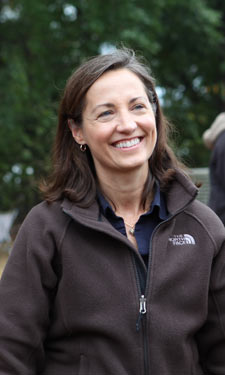 “Visitors are impressed by all the open space we have here,” says Janet Clarke, vice chair of the Loudoun County (Virginia) Board of Supervisors. “But they don’t always realize that most of what they are seeing is privately owned.”
“Visitors are impressed by all the open space we have here,” says Janet Clarke, vice chair of the Loudoun County (Virginia) Board of Supervisors. “But they don’t always realize that most of what they are seeing is privately owned.”
Clarke watched the formerly rural, Washington, D.C. exurban county nearly double in population, from 169,000 in 2000 to 312,000 in 2010. The mother of three and longtime community activist decided to run for office in 2011 partly because of her concerns about land-use and planning challenges in her county. She now sits on the Transportation and Land Use Committee—and she describes a situation where the relative scarcity of public lands is pitting environmentally minded passive-use park proponents against those clamoring for more playing fields and active-use parkland. This is an understandable, Clarke says, since the explosive growth in the county has simultaneously encroached on natural habitats while creating a staggering 200-plus deficit of playing fields.
“I don’t think it’s quite accurate to say we’re trying for ‘win-win solutions’ here,” she says. “We’ll have to have compromises on both sides….But, ideally, the passive-use and active-use camps can work together, since both sides recognize the need for more public land.” Clarke sees her role as one of proposing creative solutions (such as strategic investment in turf fields in some locations and an open-space land program incentivizing private landowners to allow public uses of their land), and challenging land acquisition plans that fail to offer possibilities for combined use. She describes, for example, a 154-acre centrally located parcel of land recently acquired by the county and earmarked for passive-use recreation.
“I was told the topography just wasn’t right for athletic fields,” she says. “So I sought out the opinion of an outside expert, who believed at least one field could be part of the plan for that topography and that amount of acreage….and we are exploring that.” The main point, she says, is not that either type of use is more important than another, but that “doing what’s best for the whole [population] should determine how we plan our parks.”
The key to this sort of cooperation is open public dialogue, Clarke believes. Passive-use proponents have much to teach all park supporters about advocacy and environmental responsibility, she reflects. And, likewise, families who want playing fields for their kids should take time from busy schedules to communicate publicly how ball fields and organized sports benefit youth and enrich communities. And ultimately, Clarke adds, “if you want to bring more people to natural areas, what better way than to allocate space for fields?”
Maureen Hannan is Senior Editor of Parks & Recreation

